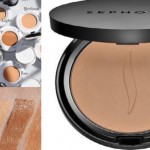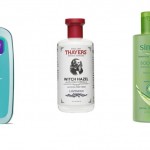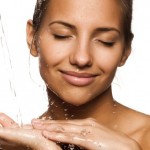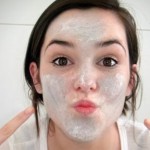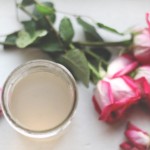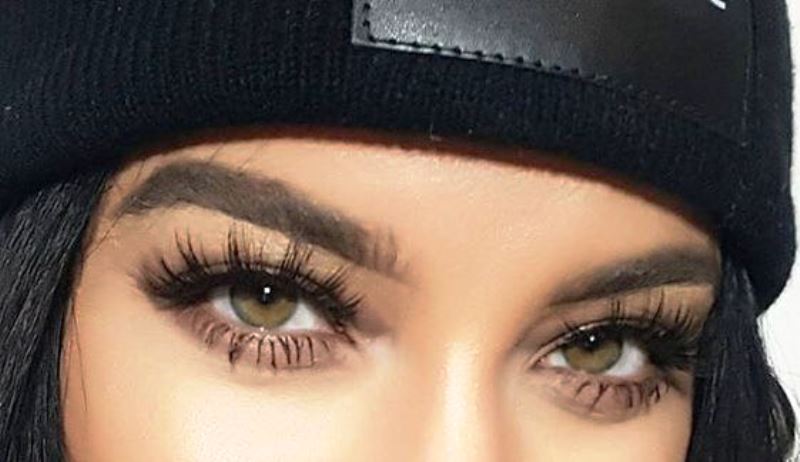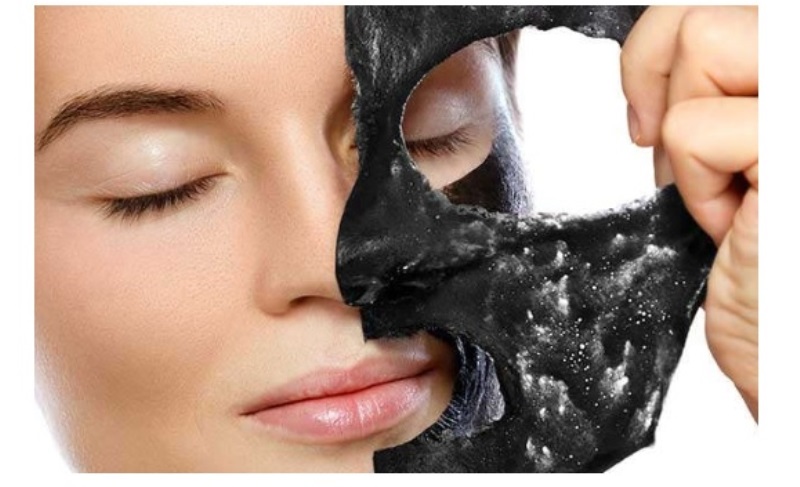Yes, you do not have to be an expert at chemistry to figure what those scary-looking formulas on the label of your favorite beauty products are! All you gotta do is turn to the NLT cheat sheet for decoding what your favorite beauty products are made of. We’ve drawn a ready-to-use list of all the perplexing jargon and scientific ingredients in cosmetics that go into the making of the beauty products you pick off the shelves- so that the next time someone pops a question about how well do you know what goes into your skin, you can simply smile at his folly. We know you love your skin and are as careful about what goes on inside it, as with what you put on it.

Image source: Pixabay, under Creative Commons License
So, here’s all you need to differentiate between the benign, harmful and marketing gimmicks of the beauty industry… an A to Z guide for the ingredients in cosmetics that go into the making of their beauty products:
Acetone: Extremely drying and damaging to nails and cuticles in concentrated doses, this colorless, liquid solvent is used to dissolve nail polish, paint or glue.
Alcohol: An inedible alcohol used in skincare, ethyl alcohol helps important ingredients in your favorite beauty products percolate deeper into the skin. It also helps to dissolve the oil secretion on the skin and tighten pores.
Alguronic Acid: A proprietary blend of algae extracts, Alguronic acid helps in minimizing wrinkles and rejuvenating the damaged collagen fibres, thereby tightening and firming loose skin.
Suggested read: The beau idéal guide on how to fake plump lips like Kylie Jenner’s
Allantoin: Allantoin is a natural compound found in animals and plants that has the ability to regenerate skin cells. It is mostly deployed in several beauty formulations its therapeutic and soothing properties to moisturize and heal skin.
Alpha Hydroxy Acids (AHAs): Alpha hydroxy acids are a group of naturally occurring acids like glycolic, lactic, citric or mandelic acid. These acids are known to unlock the fluid that binds surface skin cells together, thereby allowing the dead skin cells to be exfoliated and removed. These naturally exfoliating acids have been found to be instrumental in unclogging pores, brightening dull skin, removing blackheads and minimizing wrinkles.
Amino Acids: It is no revelation that these are the building blocks of proteins. Also naturally found in collagen and elastin, beauty products that furnish amino acids externally may help repair the damage and restore tenacity and firmness to skin’s natural structural support.
Anti-Aging: Anti-aging formulas or ingredients are known to counter the ravages of time with preventative and curative measures. They repair the damage to the skin, owing to age and help bolster the firmness of the skin by replenishing the skin’s natural propensity for firmness.
Antioxidants: Antioxidants such as vitamin C and E counteract the skin-damaging effects of oxidizing agents, also known as free radicals.
Arginine: Often found in anti-aging products and supplements, arginine is a basic amino acid that replenishes the depleted reserves in collagen and hair keratin.
Ascorbic Acid (aka L-Ascorbic Acid): A topical form of vitamin C, Ascorbic acid is used to combat the effect of free radicals on the skin, brighten skin tone and bolster the functioning of collagen fibres.
Avobenzone: A chemical compound most commonly found in sunscreens, Avobenzone is used to absorb UVA rays. However, it offers no protection against UVB rays.
Azelaic Acid: Azelaic acid is an antibacterial and anti-inflammatory agent, proven to be extremely effective in regulating the production of keratinocytes. This helps to ensure that the skin cells produced aren’t in inordinate quantities so as to build up a thick layer and clog skin pores, thereby causing acne and other skin problems. Adelaic acid also helps in reducing the visibility of dark spots, minimizing redness and puffiness and smoothening out uneven complexion.
Benzoyl Peroxide: Benzoyl peroxide helps to combat acne by destroying pimple-causing bacteria and unclogging pores.
Beta Hydroxy Acid (BHA): Beta hydroxy acids act as chemical exfoliators that penetrate deep into the skin and help in minimizing wrinkles, stripping off the layer of dead skin cells and unplugging pores. Salicylic acid is a point in case.
Ceramides: Ceramides are fats that act as a glue to hold skin cells together and strengthen the functionality of skin as a protective barrier.
Coenzyme Q10: An antioxidant used in skincare products, coenzyme Q10 helps in regulating cell functionality and maintaining the consistency of skin tone and improving its texture.
Suggested read: This Diwali Splash Out Loud: YOU Be The Bomb With These Festive Looks!
Fragrance–Free: Any fragrance free product isn’t devoid of a definitive smell or scent. It simply means that no additional fragrance has been added to the formulation to mask the natural smell or scent of the ingredients used.
Free Radicals: Free radicals are unstable molecules that can cause cellular damage to your body.
Glycerin: An inexpensive humectant, glycerine is mostly used in skin products to moisturize skin.
Glycolic Acid: An alpha hydroxy acid derived from sugarcane, glycolic acid is an excellent exfoliating agent and aids in evening out skin tone.
Humectants: Humectants are hydrating ingredients that ingest moisture from the skin and inject them into your skin.
Hyaluronic Acid: Hyaluronic acid is a viscous liquid that pumps up the skin’s moisture content and prevents water loss.
Hydroquinone (HQ): Hydroquinone inhibits melanin production so as to reduce the visibility of dark spots and other areas of hyperpigmentation.
Hypoallergenic: Hypoallergenic products are especially designed for those with a sensitive skin type. They are built with minuscule or negligible amount of irritants in the formula so as to oust any possibility for causing an allergy.
Idebenone: A synthetic antioxidant compound used to minimize inflammation and UV damage to skin cells that can cause wrinkles and hyperpigmentation.
Kojic Acid: Kojic acid, not unlike hydroquinone, inhibits melanin production, thereby helping in clearing up dark spots and evening out skin tone. However, it is a much milder agent than HQ and is therefore, preferred more.
Lactic Acid: A gentle exfoliator, Lactic acid is an alpha hydroxy acid that is derived from fermented milk.
Lycopene: Lycopene is an antioxidant found in common fruits as tomatoes and watermelons. It helps to protect the skin from sun damage.
Mandelic Acid: Mandelic acid is a gentle, oil soluble alpha hydroxy acid that is mostly deployed to counter acne and other hyperpigmentation problems.
MMPi.20: MMPi.20 helps to inhibit the formation of enzymes that break down collagen, thereby helping the skin retain its tenacity and firmness and keeping the visible effects of aging at bay.
Natural: A widely unregulated term in the beauty industry mostly used to bolster sales, the label usually implies that some natural ingredients have gone into the making of the formula. However, any product labeled ‘natural’ can contain upto 30% synthetic ingredients and still be marketed as a natural product.
Non-Acetone: Non-acetone polish removers contain ethyl acetate or methyl ethyl keytone. They are gentler on nails and cuticles than acetone based formulas. But for the same reason, they are less effective in removing nail paint.
Noncomedogenic: Any noncomedogenic skincare product contains ingredients that won’t block your pores, thereby helping keep the skin’s natural flushing system intact.
Nontoxic: A product that is generally safe and not hazardous or harmful to your sin and overall wellbeing.
Organic: Any product or ingredient that has been grown and processed in an ecologically-friendly manner with zero use of pesticides or fertilizers, toxic chemicals and genetically-modified organisms can be labeled organic. The USDA certifies any cosmetic or skincare product as organic when it contains a minimum of 70 percent organic ingredients and is free from harmful chemicals (like silicones, phthalates, etc.) as well as non-organic and GMO additives.
Suggested read: #InstaGlam Work your lipsticks to give you instant celeb looks
Panthenol: A B vitamin that is used to bolster the strength of hair and skin.
Parabens: Parabens (like butylparaben, methylparaben, propylparaben and alkyl hydroxy benzoate) are chemical preservatives used to prevent bacterial growth in cosmetics, skincare products, toothpastes etc. They are known to interfere with the body’s hormonal mechanism and are suspected of being carcinogenic.
Peptides: Peptides are chains of amino acids that help in the production of specific protein compounds that aid and facilitate in cell repair and strengthening.
Phloretin: A chemical also found in apples, Phloretin helps to minimize the damage caused to the skin by the sun.
Retinol: Retinol is a potent vitamin A molecule used in anti-aging products. Often touted as a holy grail ingredient, it minimizes fine lines and wrinkles, diminishes hyperpigmentation and bolsters collagen production. However, it can also be an irritant for sensitive skin.
Salicylic Acid: Salicylic acid is a beta hydroxy acid that doubles up as an exfoliant to unplug clogged pores as well as strips off all impurities and cleanses the skin by removing dead cells and other bacterial growth.
Sulfate-Free: Sulfates are harsh detergents composed of mineral salts such as sodium lauryl sulfate or sodium laureth sulfate. Beauty products that do not include sulfate compounds in their formulas do not lather and are hence, deemed milder and gentler for your skin and hair.
Sun Protection Factor (SPF): SPF is the percentage of UVB rays that a sunscreen is able to block out. An SPF 15 formula guards against 93 percent of UVB rays while an SPF 30 formula protects against 97 percent of UVB rays. An SPF 50 guards is effective in blocking a whopping 98 percent of UVB rays. SPF doesn’t ward off UVA rays.
Titanium Dioxide: Titanium dioxide is a white mineral compound that is mostly deployed as a physical blocking component in sunscreen formulations.
Unscented: Products touted as unscented contain a fragrance additive to mask any discernible smell/scent.
Do you need help with decoding any other ingredients in cosmetics that you use? Tell us in the comments below.
Featured image source: Pixabay, under Creative Commons License



